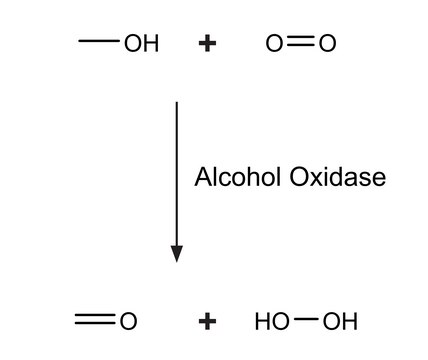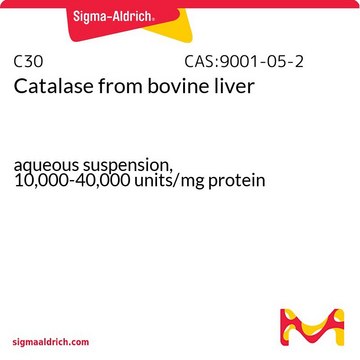A2404
Alcohol Oxidase solution from Pichia pastoris
buffered aqueous solution, 10-40 units/mg protein (biuret)
Synonym(s):
Alcohol:oxygen oxidoreductase
About This Item
Recommended Products
form
buffered aqueous solution
Quality Level
specific activity
10-40 units/mg protein (biuret)
shipped in
dry ice
storage temp.
−20°C
Looking for similar products? Visit Product Comparison Guide
General description
Application
Biochem/physiol Actions
Unit Definition
Physical form
Storage Class Code
10 - Combustible liquids
WGK
WGK 3
Flash Point(F)
Not applicable
Flash Point(C)
Not applicable
Personal Protective Equipment
Regulatory Information
Choose from one of the most recent versions:
Certificates of Analysis (COA)
Don't see the Right Version?
If you require a particular version, you can look up a specific certificate by the Lot or Batch number.
Already Own This Product?
Find documentation for the products that you have recently purchased in the Document Library.
Protocols
To measure alcohol oxidase activity, this assay uses 2,2′-azino-bis-(3-ethylbenzothiazoline-6-sulfonic acid) and a continuous spectrophotometric rate determination at 405 nm.
Our team of scientists has experience in all areas of research including Life Science, Material Science, Chemical Synthesis, Chromatography, Analytical and many others.
Contact Technical Service





